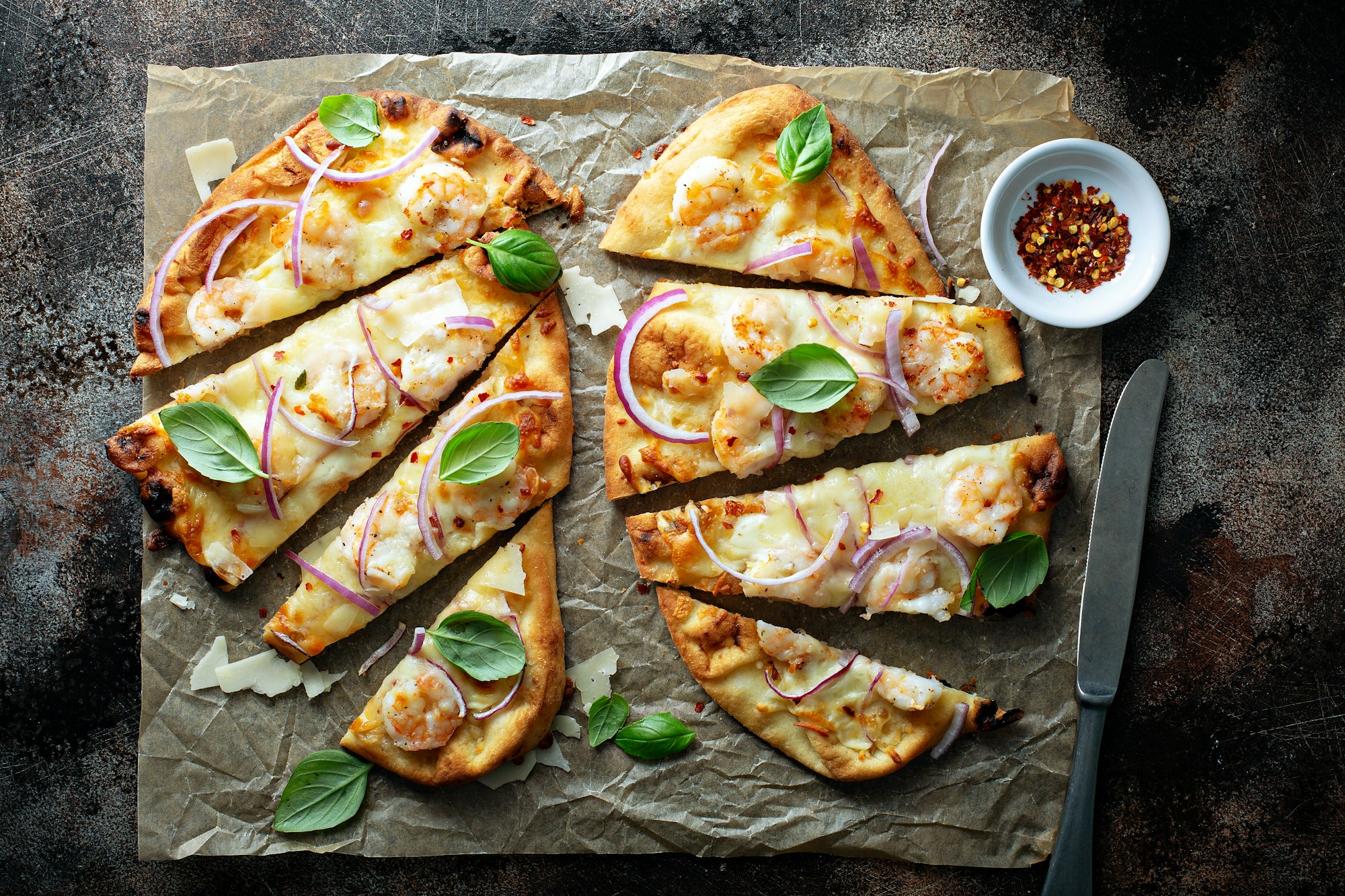In a world where fast food has become a staple, we cannot deny the allure of a cheesy, saucy, and crispy slice of pizza. Whether you’re a pizza purist who loves the classic Margherita, a fan of intricate toppings, or an individual following a strict dietary regimen, there is a type of pizza out there for you. But what if you fall into the latter category, and your dietary restrictions involve gluten? Then, it’s time to turn our attention to gluten-free flatbread pizza.
Pizza has always been a code-word for a melange of guilty pleasures and comfort, but it can also be a code-word for a healthy, balanced diet, especially when it comes to gluten-free pizza. Flatbread pizza serves as a canvas for an array of wholesome ingredients and flavors, all the while maintaining a crust that is light and crisp, but most importantly, gluten-free.
In parallel : What Techniques Can You Use to Make Authentic Japanese Onigiri?
Exploring the world of gluten-free flatbread pizza opens up an avenue for creativity and gourmet tastes. So, how can you make a gourmet gluten-free flatbread pizza? This article dives deep into this question, providing insights and a recipe to help you master your homemade, gourmet gluten-free flatbread pizza.
Selecting the Right Gluten-Free Flour
When it comes to making a gluten-free flatbread pizza, the flour you choose is of paramount importance. Not all gluten-free flours are created equal and picking the right one can determine the texture and taste of your flatbread.
In parallel : Can You Create a Gourmet Blue Cheese Dressing with a Yogurt Base?
There are numerous types of gluten-free flours available in the market today, including almond flour, coconut flour, rice flour, and much more. But for a gourmet flatbread pizza, we recommend a blend of flours. Use a mix of rice flour for lightness, tapioca flour for stretch and brown rice flour for a whole grain, hearty texture.
While choosing your flour, pay attention to its binding characteristics. Since gluten is a binder, gluten-free flours often need a little help. Xanthan gum or guar gum are commonly used to help bind the flour and prevent the dough from being too crumbly.
Preparing the Gluten-Free Dough
With your flour selection complete, it’s time to prepare the dough. Start by combining 2 cups of your gluten-free flour blend with 1 teaspoon of xanthan gum, 1 teaspoon of salt and 2 teaspoons of baking powder in a large bowl. In another bowl, combine 1 cup of water, 1 tablespoon of olive oil, and 1 tablespoon of apple cider vinegar. Now, slowly add the wet ingredients to the dry, mixing continuously until a sticky dough form.
Add 1 tablespoon of active dry yeast to the mix and knead the dough until it is elastic and smooth – approximately 10 minutes. Then, cover the dough with a damp cloth and let it sit undisturbed for 1-2 hours to rise.
The yeast will allow your dough to rise, giving it a light and airy texture. Remember, the longer the rise, the better the flavor of the pizza, as it allows for fermentation.
Baking the Flatbread
Now that your dough has risen, it’s time to preheat your oven. For a perfect gluten-free flatbread pizza, the oven temperature is crucial. Preheat your oven to its highest setting, ideally around 500 degrees Fahrenheit. This high temperature will ensure a crispy crust and beautifully melted cheese.
Divide your dough into small balls, using extra flour to prevent sticking. Roll each ball into a thin circle using a rolling pin. Place the rolled dough onto a baking tray lined with parchment paper and bake for 5-7 minutes until lightly golden.
The key here is to bake the crust first before adding the sauce and toppings. This will prevent your pizza from getting soggy and maintaining a crispy crust.
Going Gourmet – The Toppings
Going gourmet involves more than just the dough and baking process, but also the quality and pairing of toppings. Opt for fresh, organic ingredients for a true gourmet experience.
Since you’ve gone to the trouble of making a gluten-free crust, why not push the envelope a little further and make a vegan flatbread pizza? Some of our favorite toppings include vegan mozzarella cheese, fresh basil, sun-dried tomatoes, caramelized onions, roasted garlic, artichokes, and a drizzle of balsamic glaze.
Start by spreading a thin layer of pizza sauce on your pre-baked crust. Then, add a generous sprinkle of vegan mozzarella cheese. Layer your chosen toppings and bake the pizza for another 10-15 minutes until the cheese is bubbly and the crust is golden brown.
Final Touches to Your Gourmet Gluten-Free Pizza
Even though the pizza is out of the oven and your kitchen smells heavenly, your gourmet experience isn’t complete yet. Now is the time to add some fresh ingredients that will bring your gluten-free pizza to the next level.
Once your pizza is out of the oven, add a handful of fresh arugula, a sprinkle of red pepper flakes, a dash of vegan parmesan, and a drizzle of olive oil. These final touches will elevate your basic gluten-free pizza into a gourmet meal that is both delicious and healthy.
Remember, the key to a gourmet gluten-free flatbread pizza lies in both the ingredients you select and the love and patience you incorporate during the baking process. Happy baking!
Exploring Variations of Gluten-Free Flatbread Pizza
A gluten-free flatbread pizza can be as diverse as your imagination allows. The possibilities are endless, and the key is in experimenting with different combinations of fresh produce, cheeses, meats, and sauces.
For a Mediterranean spin on your pizza, try adding olives, red onions, feta cheese, and tzatziki sauce on the pre-baked crust. Or if you’re more inclined towards Asian flavors, a combination of tofu, bell peppers, spring onions, and a drizzle of gluten-free soy sauce can create a unique fusion pizza.
You can also try a dessert pizza by substitinuting the savory ingredients with sweet toppings such as fresh fruits, a drizzle of honey, and a sprinkle of cinnamon. A pizza dough made from a blend of rice flour, tapioca flour, and xanthan gum can serve as an excellent base for this sweet treat.
In terms of cheese, while mozzarella is a classic choice, don’t be afraid to try others such as gouda, blue cheese or even vegan options. If you’re going all out gourmet, a dusting of freshly grated truffle pecorino can take your pizza to a whole new level.
Remember, gluten-free doesn’t have to mean flavor-free. With the right combination of gluten-free flour, quality toppings, and careful baking, your gluten-free flatbread pizza can be an explosion of flavors.
Conclusion: The Art and Science of Gluten-Free Pizza Making
In conclusion, mastering the art of gluten-free flatbread pizza making is a journey, not a destination. It involves understanding the science behind gluten-free flours, the importance of the right baking temperature, and the delicate balance of flavors in your toppings.
Experiment with different gluten-free flours to get a feel for their different textures and flavors. Bob’s Red Mill, for example, offers a wide range of gluten-free flours, including a pizza crust blend that’s worth trying. You can also try making your gluten-free sourdough starter for an extra tangy flavor in your pizza crust.
Remember the importance of yeast and the role it plays in achieving a light and airy crust, even in a gluten-free pizza. Also, don’t forget the essential step of baking your pizza crust first for 5-7 minutes to prevent it from getting soggy.
Going gourmet with your gluten-free flatbread pizza is about utilizing high-quality, fresh ingredients and taking the time to prepare them with care. Whether you’re making a vegan pizza with a waterfall of colorful veggies or a classic Margherita with a gluten-free twist, the key is in the balance of flavors.
Above all, making a delicious gluten-free flatbread pizza is about embracing the versatility of gluten-free ingredients and using them to create a meal that’s both healthy and indulgent. After all, who says you can’t have your pizza and eat it too, even on a gluten-free diet? Enjoy the process, play with ingredients, and before you know it, you’ll be a master of gluten-free pizza making.






